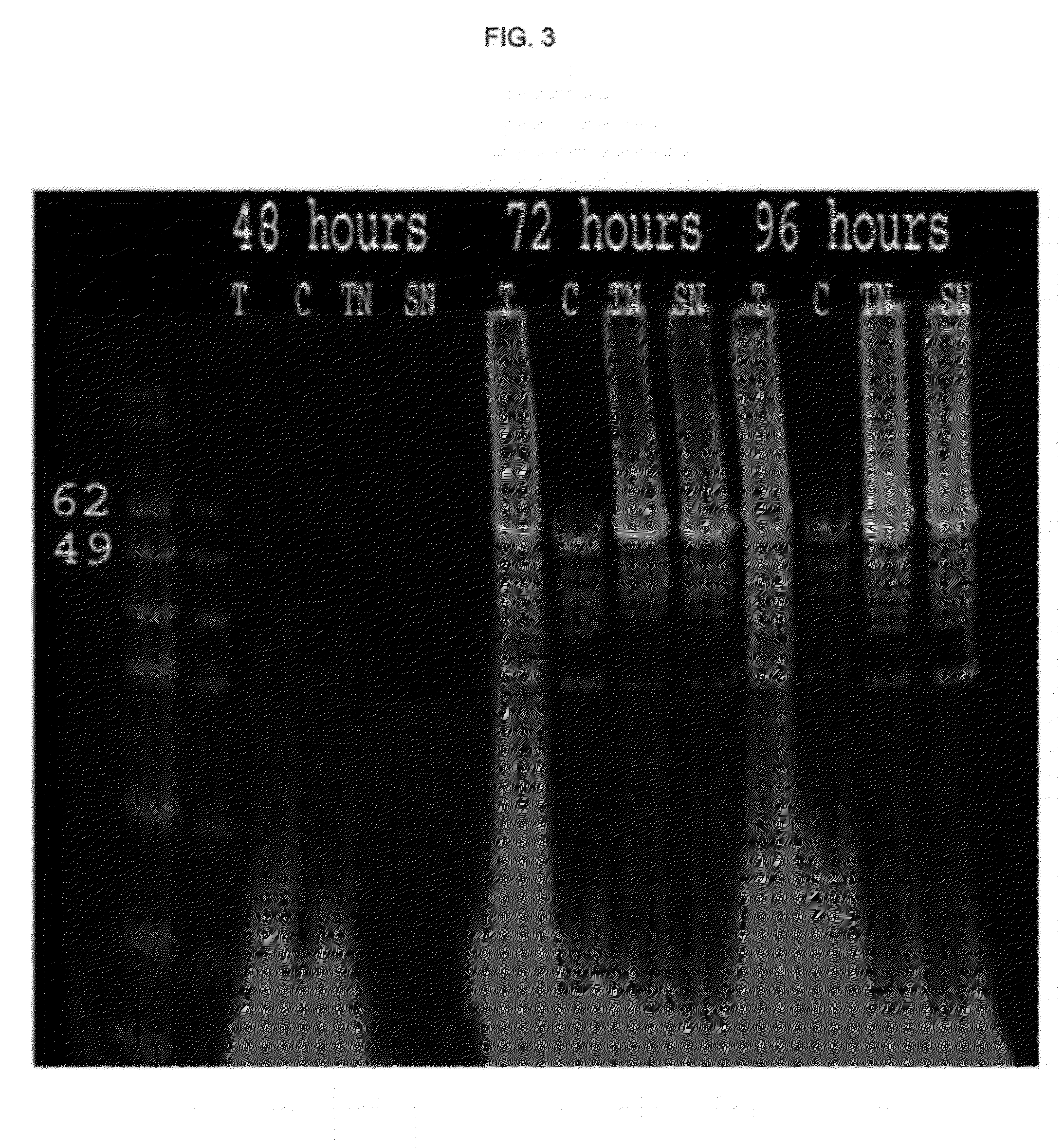Virion Derived Protein Nanoparticles For Delivering Diagnostic Or Therapeutic Agents For The Treatment Of Non-Melanoma Skin Cancer
a technology of derived protein and nanoparticles, which is applied in the direction of dsdna viruses, peptide/protein ingredients, drug compositions, etc., can solve the problems of affecting the efficiency and safety of delivery of sirna molecules through bloodstream or skin, affecting the course of viral infections, and affecting the effect of dsdna production
- Summary
- Abstract
- Description
- Claims
- Application Information
AI Technical Summary
Problems solved by technology
Method used
Image
Examples
example 1
Production and Purification of Capsid Proteins in Host Cells and In Vitro Reassembly into VLPs
[0090]Suspension cultures of Sf9 insect cells were maintained in serum-free Sf-900™ II medium (Invitrogen, Lide Technologies) and expanded from shake flasks to WAVE Bioreactors™ (GE Healthcare Lifesciences). Approximately 2 L of shake flask culture was utilized to seed the 10 L WAVE Bioreactors™ at an initial density of 4×105 cells / ml.
[0091]Once the actively growing culture reached a density between 1.5-2×106 cells it was infected with a recombinant baculovirus stock for HPV16L1 or HPV16 / 31 mutant and a HPV16L2 at an MOI of 5. Recombinant baculovirus stocks were produced, as described herein (Table 1).
[0092]According the present invention, an overview of an exemplary protocol for generating Baculovirus generation and preparing a high-titer stock preparation is described as follows. Transform DH10Bac Competent Cells with pFastBac construct and heat shock the mixture. Serial dilute the cells ...
example 2
Production of Mutant L1* and L2 Capsid Proteins in Mammalian Cell System
[0103]Similarly to Example 1 described above, a mammalian culture system is used to produce mutant L1*(16 / 31) and L2 capsid proteins. Plasmids containing human-optimized codon sequences are used for this purpose (SEQ ID NO: 5) and a general protocol is followed (Buck, C. B., et al. (2005) Methods Mol. Med., 119: 445-462, which reference is incorporated herein).
example 3
Assembly into VLPs from Capsid Proteins
[0104]Capsid proteins isolated from insect cells were assembled into VLPs as described. Dynamic light scattering (DLS) demonstrates presence of capsid proteins in monomeric and oligomeric forms (<10 nm) after harvest and prior to the loading procedure. After the reassembly in presence of the nucleic acid payload, VLPs are seen by DLS (50-70 nm diameter) (FIG. 4).
PUM
| Property | Measurement | Unit |
|---|---|---|
| Therapeutic | aaaaa | aaaaa |
| Cell proliferation rate | aaaaa | aaaaa |
Abstract
Description
Claims
Application Information
 Login to View More
Login to View More - R&D
- Intellectual Property
- Life Sciences
- Materials
- Tech Scout
- Unparalleled Data Quality
- Higher Quality Content
- 60% Fewer Hallucinations
Browse by: Latest US Patents, China's latest patents, Technical Efficacy Thesaurus, Application Domain, Technology Topic, Popular Technical Reports.
© 2025 PatSnap. All rights reserved.Legal|Privacy policy|Modern Slavery Act Transparency Statement|Sitemap|About US| Contact US: help@patsnap.com



